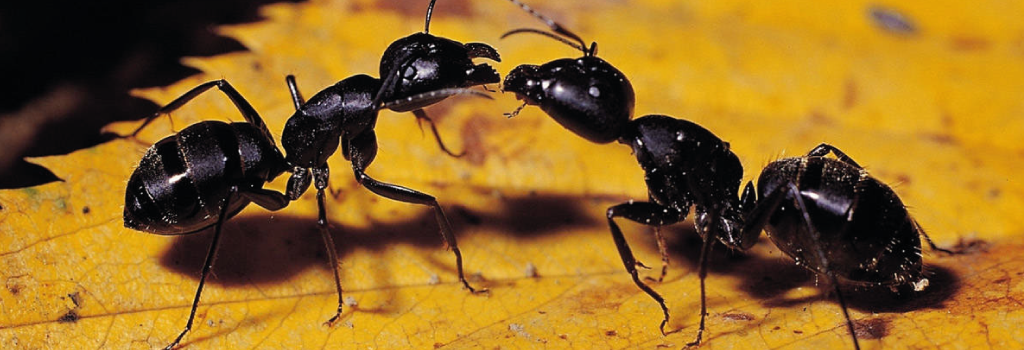Commonly known as Garden Ants, Black Ants typically become a problem during the warmer months of spring and summer. They nest in and around buildings and gardens.
Black Ants
The mating ants are often referred to as flying ants, and can emerge from early spring in swarms that may last up to three hours. The males die after mating but the females shed their wings, dig into the soil to start new nests.
Ants feed on a wide range of foods but are particularly attracted to sweet substances such as sugar or honey, and will often invade homes, kitchens and cupboards in search of such food. For prevention it is therefore important to make sure all food waste and spillages are cleaned up immediately, foods are stored in sealed containers, especially sweet foods like sugar, rubbish bins are emptied regularly and that pet food is not left out for long periods.
While ants are not dirty insects, they do walk across unclean areas, leading them to be considered unacceptable. In cases of invasion, all cracks and crevices should be sealed and a residual insecticide can be used. Successful ant pest control using insecticides takes a great deal of time and effort as nests are frequently inaccessible and difficult to destroy, and therefore may require a pest control specialist.
- Size: Little black ants are small. The workers are as small as 1.5 mm in length, and queens can measure up to 4 mm.
- Color: They are dark-brown, black or jet black in color.
- Antennae: Their antennae consist of 12 segments and end in a three-segmented club.
- Body: Their pedicel, or the ant waist, is two-segmented. Little black ants have no spines, and their thorax is unevenly rounded.
Behavior, Diet & Habits
What Do They Eat?
Little black ants are omnivorous and will eat:
- Corn meals
- Cotton flea hoppers
- Greasy or oily foods
- Honeydew
- Insects
- Plant secretions
- Sweets
- Vegetables
Reproduction
Little black ant colonies have moderate to large populations, with two or more queens in one colony. Little black ant winged swarms are common from June to August, during which time mating occurs. After mating, both males and females shed their wings and the males die soon after mating.




